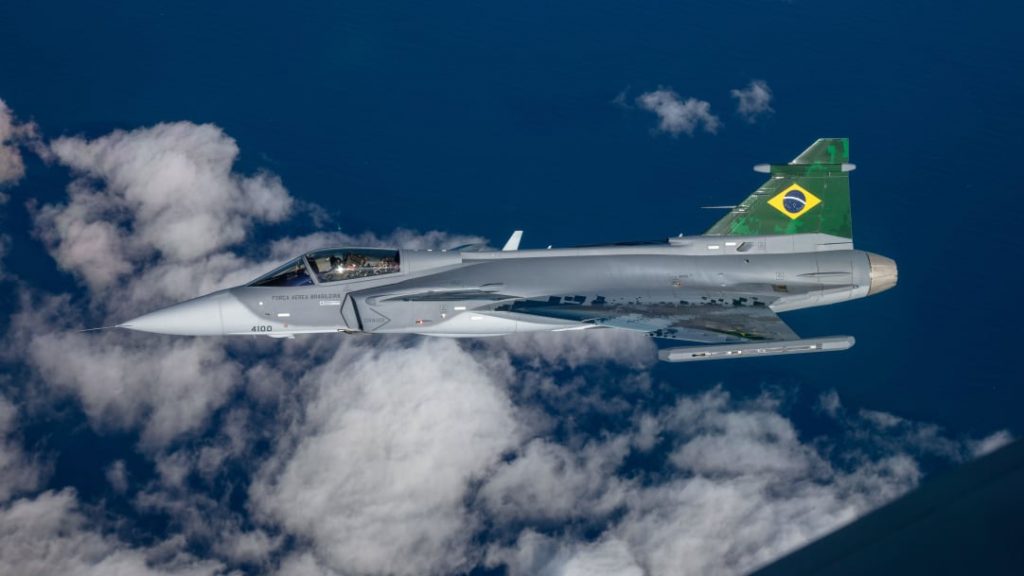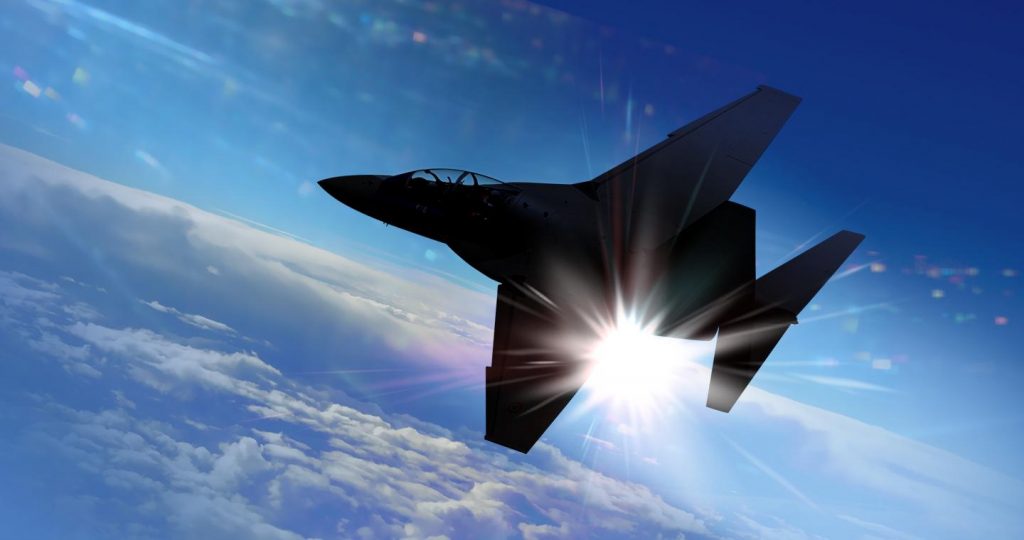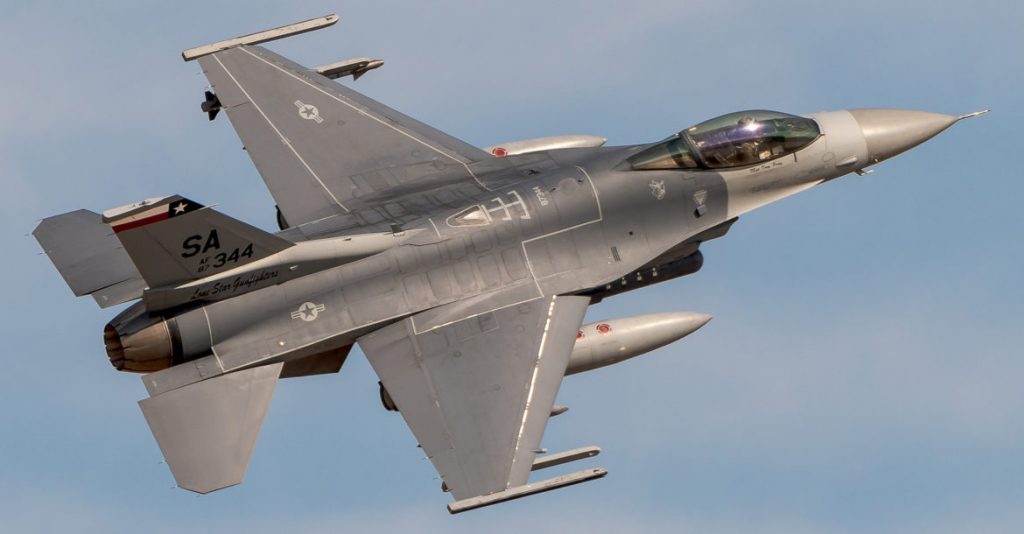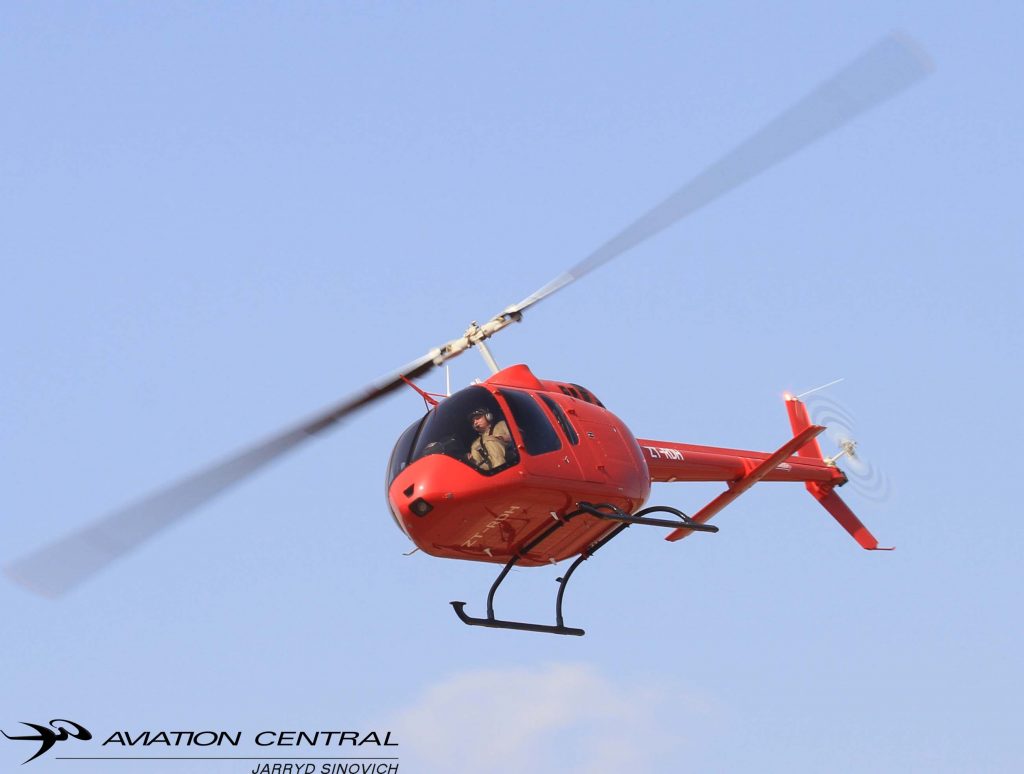Tag Archives: AviationNews
Saab strengthens ties to Quebec and Canada through CRIAQ partnership
This collaborative relationship aims to leverage Quebec’s R&D ecosystem’s strengths to encourage the development of collaborative research projects between Saab and Canadian industry, as well as universities and research organizations.
This collaboration has been formed to support Saab’s future Industrial and Technological Benefit (ITB) commitments, if the Gripen fighter is selected for Canada’s Future Fighter Capability Project (FFCP).

“The quality and breadth of aerospace research and innovation in Canada is globally recognised, with the Quebec region home to many excellent companies and institutions. Therefore, it was natural to reach this agreement with an important organisation like CRIAQ. We look forward to working together to benefit research and the fostering of talent in Quebec,” said Jonas Hjelm, Senior Vice President and Saab’s Head of business area Aeronautics.

“During such unsure times within the industry, this partnership demonstrates that the aerospace industry in Quebec and Canada remains attractive and world class. We are very pleased with this signing as we continue to develop our aerospace industry, adding a new global player to our ecosystem. I am convinced that CRIAQ’s academic, industrial and SME community, and the Quebec economy as well, will clearly benefit from this international collaboration,” said Alain Aubertin, CEO of CRIAQ.

The ITB Policy is the government’s main tool for leveraging procurement to create jobs and economic growth in Canada. Saab has submitted an offer of 88 Gripen E fighters for the Canadian FFCP, and a core element of the Gripen industrial offering includes CAE in Montreal, Quebec who will supply training and mission systems solutions.
C-390 Millennium receives Aviation Week Grand Laureate in the Defense Segment
São Paulo, Brazil, October 19, 2020 – The Embraer C-390 Millennium multi-mission aircraft, manufactured by Embraer, today received the Grand Laureate in the Defense Segment and the Laureate Award for the “Best New Product” in Defense from Aviation Week Network. The citation for the award reads, “The first C-390 tanker/transport, the largest and most sophisticated aircraft yet developed by Embraer, was delivered to the Brazilian Air Force in 2019.”
“To receive an award with as much prestige as the Laureate is a very significant acknowledgement of the exceptional work of all Embraer employees. This is a substantial recognition of the merits of our engineers and the ability of our workforce to execute the development of such an advanced product with excellence,” said Francisco Gomes Neto, Embraer S.A. President and CEO. “Embraer’s new business strategy seeks to increase revenue and profitability, and the C-390 Millennium plays an important role in solidifying the Company as a serious entrant in a new market segment.”

“We are honored to receive this award, which recognizes the excellence of our programs and of this aircraft, which was developed to set new standards in its class, bringing exceptional performance complemented by the lowest life-cycle cost in the market,” said Jackson Schneider, President and CEO of Embraer Defense & Security. “The C-390 Millennium offers greater flexibility and value to operators performing air transport and air mobility missions, among others.”
The Aviation Week Laureates Awards recognize the extraordinary achievements and innovative personalities that represent the values and vision of the global aerospace community. Programs honored with Laureates Awards have changed the way people work and move around the world. Aviation Week continues to recognize the very best accomplishments in the four pillars of our industry: Defense, Commercial Aviation, Space, and Business Aviation.

In 2009, the Brazilian Air Force (FAB) contracted Embraer to design, develop, and manufacture the C-390 Millennium aircraft as a replacement for its aging C-130 fleet. Deliveries to FAB started in September 2019. The C-390, which was recently ordered by the Portuguese Government, is a new generation multi-mission transport aircraft that offers unrivaled mobility, fast reconfiguration, high availability, and enhanced flight safety, all on a single, exclusive platform.


The aircraft can perform a variety of missions, such as cargo and troop transport, cargo and paratrooper airdrop, aerial refueling, search and rescue, aerial firefighting, medical evacuation, and humanitarian missions.
Flying faster and delivering more value, the Millennium is the right sized platform for major airlift deployment scenarios. Minimized intervals and on condition maintenance, combined with highly reliable systems and components, reduce downtime and costs, contributing to outstanding availability levels and low life cycle costs.

The C-390 benefits from a modern fly-by-wire flight control system with integrated technology that lowers the workload of the crew and increases the safety of its operation. Furthermore, the aircraft can refuel other aircraft in flight, with the installation of removable internal fuel tanks. The aircraft can also be refueled in flight, thus providing greater flexibility for longer missions. An advanced self-defense system increases the aircraft’s survival capability in hostile environments.

Equipped with two International Aero Engines V2500 turbofan engines, the latest avionics, a rear ramp, and an advanced cargo handling system, the C-390 is capable of carrying up to 26 metric tons of cargo at a maximum speed of 470 knots (870 km/h), with ability to operate in austere environments, including unpaved or damaged runways. The aircraft can carry troops, pallets, armored wheeled vehicles, and helicopters.

Aviation industry tests a key solution to fly seamlessly and with more efficiency in Europe
- The COVID crisis underpins the urgency for Europe’s aviation industry to push ahead with delivering the future Digital European Sky, and building a smarter, more sustainable and resilient system in the long term.
- An essential component of the future system is ground-to-ground interoperability, a solution designed to enable the swift and seamless exchange of flight trajectory information in real time between Europe’s network of 63 air traffic control centres.
Europe’s aviation industry has completed the final test of a new SESAR Solution on ground-to-ground interoperability, which is designed to allow the network of 63 European en-route control centres to exchange information on the flight trajectories in real time, thus supporting seamless operations and improving flight efficiency.

This milestone has been reached at a time of unprecedented crisis, due to the COVID pandemic, which is compelling the industry to push ahead with delivering the future Digital European Sky, in support of a smarter and more sustainable recovery in the long term.
Air navigation service providers in Germany (DFS), France (DSNA), Spain (ENAIRE), Italy (ENAV) and EUROCONTROL’s Maastricht Upper Area Control Centre (MUAC), together with the technology provider manufacturing industries Indra, Leonardo and Thales, have worked together on its development, within the context of the SESAR Joint Undertaking research and innovation programme (SESAR 2020).

This solution addresses a frequent problem that affects Europe’s air traffic, whereby flights crossing borders or different airspace sectors have to adjust their trajectory or speed to avoid conflicts with other aircraft. The problem is caused largely by en-route control centres sharing information in a sequential way and updating the trajectory information.
To address this situation the SESAR JU ‘4DTM’ ground-to-ground interoperability (IOP) project, coordinated by Indra, has developed a solution that allows the sharing of information in real time.

With this solution, control centres involved in the management of a flight can share reliable, complete and updated flight trajectory information from take-off to landing, taking into account any existing and shared internal restrictions in the airspaces that the flight will cross.
Final tests of this solution – following the first trials successfully held in April 2019 – took place last June during two weeks in an environment simulating the operations of the Maastricht UAC, Reims UAC, Karlsruhe UAC, Geneva and Zurich UACs, Padua and Milan UACs.

Thanks to the IOP solution, all actions carried out in one centre are immediately visible in all other centres, removing any uncertainty over the conditions under which a flight would enter another airspace.
The end goal is to attain a smoother control process, which will improve the efficiency of air traffic control in Europe and make it possible to manage more flights with greater precision and punctuality, offering cost savings to airlines, reductions in CO2 emissions and ultimately providing a better service for passengers.

The solution will also help carry out the ATC process “quietly”, without the need for the air traffic controller to coordinate with his/her counterparts in adjacent centres by phone. For this purpose, and implementing the “flight object” concept, all control centres share the same information and have the possibility to request changes to flight trajectories in real time.
Some use cases on which the solution was tested:
- Changes in flight level requested by the aircraft in order to avoid storms Route changes requested by the aircraft in order to shorten route
- Real-time updates on the information regarding a particular flight trajectory by using the Flight Object data
- Flexible flight transfer procedures between control centres
- Flight management coordination between centres
- What-if mechanism to preview and negotiate changes
IOP is the enabling ground-ground communication technology and protocols for seamless flight operation across regions and national boundaries, and underpins the 4D flight trajectory with the real-time sharing of the trajectory among all the ATM actors
The results of these tests will be released at the end of this year, and will be used to update the ED133 standard developed by the European Organisation for Civil Aviation Equipment (EUROCAE), which will support subsequent industrialisation and implementation.
Scalable Agile Beam Radar (SABR) upgrades continue for US Guard, reserve and active-duty fighters
BALTIMORE – Oct. 15, 2020 – The U.S. Air Force has met Full Operational Capability (FOC) readiness for Northrop Grumman Corporation’s (NYSE: NOC) AN/APG-83 SABR active electronically scanned array (AESA) radar on Air National Guard F-16s to meet a U.S. Northern Command Joint Emergent Operational Need (JEON) for homeland defense.
On Sept. 7, the U.S. Air Force began installation of APG-83 radars on Air National Guard F-16s at Joe Foss Field, Sioux Falls, South Dakota, the fourth U.S. Air Force base to receive AN/APG-83 SABR AESA radar upgrades.

The radar upgrade of Air National Guard F-16s extends the operational viability and reliability of the fleet while providing pilots with 5th-generation fighter radar capabilities to defend our nation’s airspace.
“SABR enables F-16 pilots to detect, track, identify and target a greater number of threats faster and at longer ranges from outside the threat envelope,” said Mark Rossi, director, SABR programs, Northrop Grumman. “This upgrade will keep the multirole F-16 fighter relevant and capable for decades to come.”

The AN/APG-83 features all-weather, high-resolution synthetic aperture radar mapping to present the pilot with a large surface image for more precise target identification and strike compared to legacy systems. Its design incorporates proven hardware and advanced operating modes from Northrop Grumman’s fifth-generation F-35 and F-22 AESA radars. The high degree of commonality and shared manufacturing processes and infrastructure drives efficiencies and affordability improvements across all of Northrop Grumman’s AESA radar programs.
The AN/APG-83 AESA is now an official program of record for both the active and reserve U.S. Air Force as well as the Guard after the service procured units in February for Air Combat Command and Air Force Reserve F-16 aircraft.

Northrop Grumman solves the toughest problems in space, aeronautics, defense and cyberspace to meet the ever evolving needs of our customers worldwide. Our 90,000 employees define possible every day using science, technology and engineering to create and deliver advanced systems, products and services.
Aero Club Celebrates a Centenary of Recreational Flight
By Rob Jonkers
There is a sense of achievement on reaching a Century, on all manner of occasions it calls for a celebration, subject for congratulations on the significance and justifiable pride, the past century of the existence of the Aero Club of South Africa has been integral in seeing the growth in Recreational Aviation, the collective of the various disciplines
that make up flying for fun, that have allowed the freedom of development in the achievement of products, ideas, adventures, competitions that are existential of this magical world that is recreational flight.

This journey has been long, sometimes tedious and difficult but the persistence and passion of our members across the century has made it possible for the Aero Club to be the success it is today. One of the many great benefits and joys of living since the 20th Century is that we have had the immeasurable privilege to be able to fly, as since the dawn of mankind we have aspired to the ease and freedom of flight that only birds could enjoy, and from those early 20th Century years mankind learned to fly!

On the 10 th October 2020, after many months after postponement since C-19 made us all go into hiding, the Aero Club’s official Centenary Balloon Launch took place at Bill Harrop’s Balloon Safaris in the Magalies Valley. The weather outlook also looked great, and the launch event was a go sent out by the organisers just after 5 am. The wind started picking up somewhat, and first off the ground were the three commercial balloons that occurred at 6am, thereafter the Aero Club Balloon which was rebuilt in Aero Club Centenary colours (carrying the registration ZS- HOI as the ex Capital Radio balloon) was unfurled and prepared for a tethered inflation and launch.

Chairman of BAFSA Richard Bovell who was also this Centenary event organiser was the first pilot supported by student pilot Sema Mathebula, got the balloon off the ground in somewhat gusty conditions, the wind at that stage would not have been favourable to actually fly. Hanke Fourie took over from Richard for a second tethered stint, giving a good photographic opportunity for the guests in attendance.

After the balloon landed and was furled up again, the guests were treated to a scrumptious breakfast, as only one can experience as an early morning African sunrise breakfast in the bush. As MC for the event Richard Bovell gave a short speech on a brief history of sport ballooning in South Africa, thanked the guests for their attendance, and handed over the very first Aero Club Centenary Yearbook which is hot off the presses to the Doyen of Ballooning in South Africa Terry Adams, who since his arrival in SA in 1976 established the mainstay of balloon manufacturing
and pilot training in SA.

Thereafter Rob Jonkers as the Chair of the Aero Club thanked BAFSA and their team of hosting this one of a kind event, and the only event marking the Aero Club’s Centenary that will take place in 2020. A ceremonial Centenary cake cutting was then carried out by the Aero Club’s Executive Committee, Rob Jonkers (Chairman), Marthinus Potgieter (Vice-Chairman), John Gaillard (Hon Treasurer) and Hanke Fourie (Exco Member).


Although the year 2020 will go down in history as a great disrupter and has essentially rained on our Centenary parade, we will be looking at recovering much of the planned events in 2021 as time and resources will allow to bring justice to our 100 year heritage, especially poignant is to hold a 100 aircraft of all types flypast ( 101 also looks like a good number…) and an all Recreational Aviation Airweek as was initially planned for this year at Middelburg.



The Centenary coffee table book, which is now available for sale (details on the Aero Club website), is a compendium of each of our flying disciplines, historic and contemporary with numerous personalities with some
remarkable stories in recreational flying as a celebration for this signature Centenary Year.
Bell aircraft used to safeguard food and agriculture amid historic locust infestation
In the last 12 months, food security has been under serious threat from devastating swarms of locusts, destroying crops from East Africa to the Arabian Gulf. With experts warning of a “rolling emergency” 1 that could endanger harvests across the regions for the rest of the year, governments and international organizations face a herculean challenge in controlling the infestations. Aircraft from Bell, the U.S.-based helicopter manufacturer, have been playing a key role in the joint efforts to fight this ancient plague.
According to the UN Food and Agriculture Organization (FAO), desert locusts – whose destructive infestations cause major crop damage – are a species of grasshopper that live largely solitary lives until a combination of conditions promotes breeding and leads them to form massive swarms.

The region’s current crisis began in October 2019 as swarms formed along the Red Sea coastal plains in Yemen Saudi Arabia, Eritrea and Sudan, spreading eastwards across the Arabian peninsula and further south in Africa in the following months.
By January, Kenya, one of the countries hardest hit by the crisis, was already experiencing its worst outbreak of desert locusts in 70 years. To target this problem, authorities contracted South African helicopter operator BAC Helicopters, who had recently purchased three Bell 206L-4 helicopters, to carry out the Emergency Desert Locust Survey and Control operation in an effected part of Kenya.

The helicopters were tasked with surveying vast areas throughout the Marsabit and Turkana counties in Northern Kenya, locating and mapping the locust swarms which were threatening food security through the region. The 206L-4’s were each equipped with specialized Agricultural
Survey Equipment, an FDC Barrier Filter and Satellite Tracking System. Essential data gathered by the survey helicopters was then transferred to both fixed wing and helicopter spraying aircraft, allowing them to accurately target specific areas where the locust swarms were present.
Sameer Rehman, Managing Director of Africa and the Middle East, Bell, commented: “With a number of countries in eastern Africa and some parts of the Middle East at ongoing risk, the FAO has estimated that a locust control plan would cost $76 million to secure agriculture in the
affected region. Bell understands the need to protect the food source of these regions and we’re pleased our products can be essential tools in the collective mission to eradicate the problem.
“When it comes to food security, the stakes are very high so the reliability and capability of every tool used in the fight against locust swarms is paramount. The Bell 206, and newer light aircraft like the Bell 505 have shown time and again that they can be trusted to operate in high
temperatures and with heavy payloads, providing a capable defense wherever the swarms may be present.”

In most years, desert locust swarms tend to die out during dry season. However, with unusually high rainfall in 2020 in certain regions, the exponential growth in the populations has not abated,
creating the specter of further swarms over the coming months.
The FAO states that countries most affected by the locust situation are Ethiopia, Kenya, Somalia in Africa as well as Yemen, Saudi Arabia and parts of the UAE and Oman in the Middle East.
Bell APT 70 Successfully Completes NASA’s Systems Integration and
Fort Worth, Texas (1 October, 2020) – Bell Textron Inc., a Textron Inc. (NYSE: TXT) company, announced today the successful flight of the Bell Autonomous Pod Transport (APT) 70 as part of a joint
flight demonstration with NASA. Bell was selected to participate in NASA’s Systems Integration and Operationalization (SIO) activity in 2018, which includes multiple flight demonstrations focusing on
different types of Unmanned Aircraft Systems (UAS) and their flight environments.
The objective of Bell’s SIO demonstration was to execute a Beyond Visual Line-of-Sight (BVLOS) mission in an urban environment transitioning into and out of Class B airspace representing future commercial
flights. Mission results will be used to evaluate and demonstrate Detect and Avoid (DAA) and Command and Control (C2) technologies for use in future certified operations in controlled and uncontrolled
airspace. Data collected during the demonstration will be used to support future standards development and Federal Aviation Administration (FAA) certification guidelines.

“This successful demonstration highlights the great potential for the APT 70 to complete complex
missions for businesses and healthcare providers,” said Michael Thacker, executive vice president,
Innovation and Commercial Business. “With teammates like NASA, we can carve a path forward for future commercial operations to solve the cargo and goods transportation challenges our world currently faces.”
Launching from Bell’s Floyd Carlson field in Fort Worth, TX, the APT 70 flew a preprogrammed 10-mile circuit path along the Trinity River. Once armed from the ground control station, the APT 70 initiated a
vertical takeoff.

The vehicle then rotated to fly on its wings where it became nearly silent to the ground below. The vehicle executed its mission profile at an altitude of 500 feet above ground level. The route
included a road crossing and transition in and out of Class B airspace. Communication between the ground station and the aircraft was maintained through a redundant datalink. A prototype airborne detect
and avoid system, along with visual observers, provided the remote pilot with awareness of air traffic in
the vicinity and recommended flight maneuvers.

NASA is excited to partner with Bell to help accelerate routine UAS operations into the national airspace
with this successful flight demo,” said Mauricio Rivas, UAS integration in the NAS project manager at NASA’s Armstrong Flight Research Center. “Our efforts with Bell and our other SIO industry partners will
help commercial UAS move closer towards certification to make missions like this transport flight a
common event.”
Bell’s technology partners for the demonstration include Xwing and the University of Massachusetts
Amherst’s Center for Collaborative Adaptive Sensing of the Atmosphere (CASA). Integrated onto the APT
70 is Xwing’s airborne, multi-sensing detect and avoid system. Xwing’s system comprises of radars, ADS- B, visual system and onboard processing to provide aircraft tracks and pilot alerts transmitted to the
ground station. The APT 70 also includes CASA’s intuitive, integrated display to provide pilots with local weather risk awareness and route-based weather alerts issued by their City Warn Hazard Notification
System deployed in the DFW metroplex.

It is envisioned that in the future, an operational APT 70 could provide efficient, rapid and dependable transport for payloads up to 70lbs. The APT 70 is estimated to move three times as fast as ground transportation. The vehicle is capable of autonomous flight, automatically flying a programmed flight route and handling an array of contingency functions. Potential uses for the APT 70 include medical deliveries,
third-party logistics, offshore delivery, humanitarian relief and many more.
Heritage Day Celebrations at AFB Ysterplaat
By Rayno Snyman
There was a buzz in the air, excitement of the unknown. We had no idea what was in store for us and what a Heritage Day it was on Thursday 24 September 2020.

We were then greeted by officer commanding Airforce Base Ysterplaat Colonel C. Moatshe. Later in the day the out going chief of the Airforce Lieutenant General Fabian Msimang, who earlier had a flight in a Pilatus PC7MkII not far up the road at AFB Langebaanweg, home of the Silver Falcons Aerobatic Team.





Airforce base Ysterplaat, which hasn’t seen an Airshow since 2011.Members of the South African Air Force, Media and friends of the South African Air Force Museum Cape Town Branch got to see some of the pristine Museum aircraft on static display as well as flying units based at Ysterplaat, such as 22 Squadron a helicopter unit and 35 Sqaudron a Maritime Patrol aircraft unit.

It was a privilege to witness the amazing aircraft that have crossed paths in our Airforce as 2020 the SAAF celebrated their Centenary. From fast jets to helicopters and the mighty Shackleton. What a treat it was. The Shackleton was the highlight of the day for us, those Griffon engines sent vibrations right to our cores, not to mention the fly by the C-47TP to perfectly commemorate the Shackleton’s own heritage.





Heritage Day was perfectly celebrated at AFB Ysterplaat as it was fantastic to see our servicemen and women, young and old, active and retired from all different backgrounds, heritages and cultures coming together to celebrate this special day. We had the honour to receive a narrated tour of the Shackleton by Mr Ashbury a former 35 Squadron unit member, who could not share the history of this aircraft and his experience with more passion, even if he tried.








Many familar faces were seen and much was learned to appreciate the effort and training of everyone at SAAF, not only pilots but the engineers, ground crew, specialists and all involved who all play a vital role in keeping us safe.


We cannot wait for next year and hope to see more of the Shackleton ground runs and maybe even a Airshow again.



Russian Tu-160 strategic bombers set new WORLD RECORD for range & duration of non-stop flight
pair of Russian Tu-160 strategic bombers have spent more than 25 hours in the air and covered over 20,000km, setting a new world record for non-stop flight range, and duration, for this type of aircraft, it has been revealed.

The Defense Ministry, in Moscow, made the announcement on Saturday with Sergey Kobylash, the commander of Russia’s long-range aviation service, saying that “nobody has flown this type of aircraft longer.”

The record, which was set on Saturday, saw two Tupolev Tu-160 strategic bombers (NATO reporting name ‘Blackjack’) “staying in the air for more than 25 hours and covering a distance of over 20,000km (12,427 miles),” the commander added.
The landmark flight took place above the neutral waters of the Arctic and Pacific oceans as well as the Kara, Laptev, East Siberian, Chukchi and Barents seas, and was performed in full compliance with international rules governing use of airspace, he pointed out.
The Tu-160s refueled three times in the air during their mission, which required six Il-78 tanker planes to be mobilised. At some points along their route, the bombers were escorted by Russian Su-35 fighter jets as well as “aircraft of foreign states,” Kobylash said.

The previous record was also set by Tu-160s, which spent 24 hours and 24 minutes in the air back in 2010. In the case of passenger aircraft, a Qantas Airlines flight from New York to Sydney last year is considered to be the longest, as it saw a Boeing 787-9 with 49 people on board staying the air for 19 hours and 15 minutes, covering a distance of 16,200km (around 10,066 miles).

TU-160s Visit South Africa last October!
Last year October a pair of TU-160s traveled to South Africa landing at Air force Base Waterkloof, City of Tshwane. This was the first time this type of aircraft had landed on African soil for the first time.




First Brazilian Saab Gripen E Arrives in Brazil
The first Brazilian Saab Gripen E single-seat fighter aircraft has arrived in Brazil on Sunday, September 20, Saab announced.
The aircraft arrived through sea after been shipped from Norrköping in Sweden.
The first Brazilian Gripen is a test aircraft (39-6001, tail number FAB4100) and has been flying in Sweden since its maiden flight on August 26, 2019. In September that year, the aircraft arrived to start the flight test programme for flight envelope expansion as well as testing of tactical system and sensors.

Brazil has ordered 28 Gripen E single-seat jets that will be delivered to Brazil starting from 2021 and eight Gripen F twin-seat jets, starting from 2023. Saab is to building first 13 aircraft at its facility in Linköping, Sweden, while the remaining 23 will be built in Brazil.
Earlier this year, Saab performed the fist metal cut for the first Brazilian Gripen F, marking an important milestone in the program. The first part was manufactured recently at Saab’s facilities in Linköping, Sweden and is for the air duct section, just behind the cockpit of the aircraft.
Saab Aeronáutica Montagens (SAM) in Brazil, Saab’s first aerostructures plant outside of Sweden for the Gripen E/F, has recently announced the start of production in support of the program. This site builds sections of Gripen, which will then be delivered to the final assembly facilities at the Embraer plant in Gavião Peixoto, São Paulo, Brazil and to Linköping, Sweden.

The tail cone and front fuselage of the single-seat version of the Gripen fighter (Gripen E) are the first aerostructures to enter into production at SAM. Subsequently, the aerodynamic brakes, rear fuselage, wing box and front fuselage for the two-seater version will also be manufactured at SAM.













